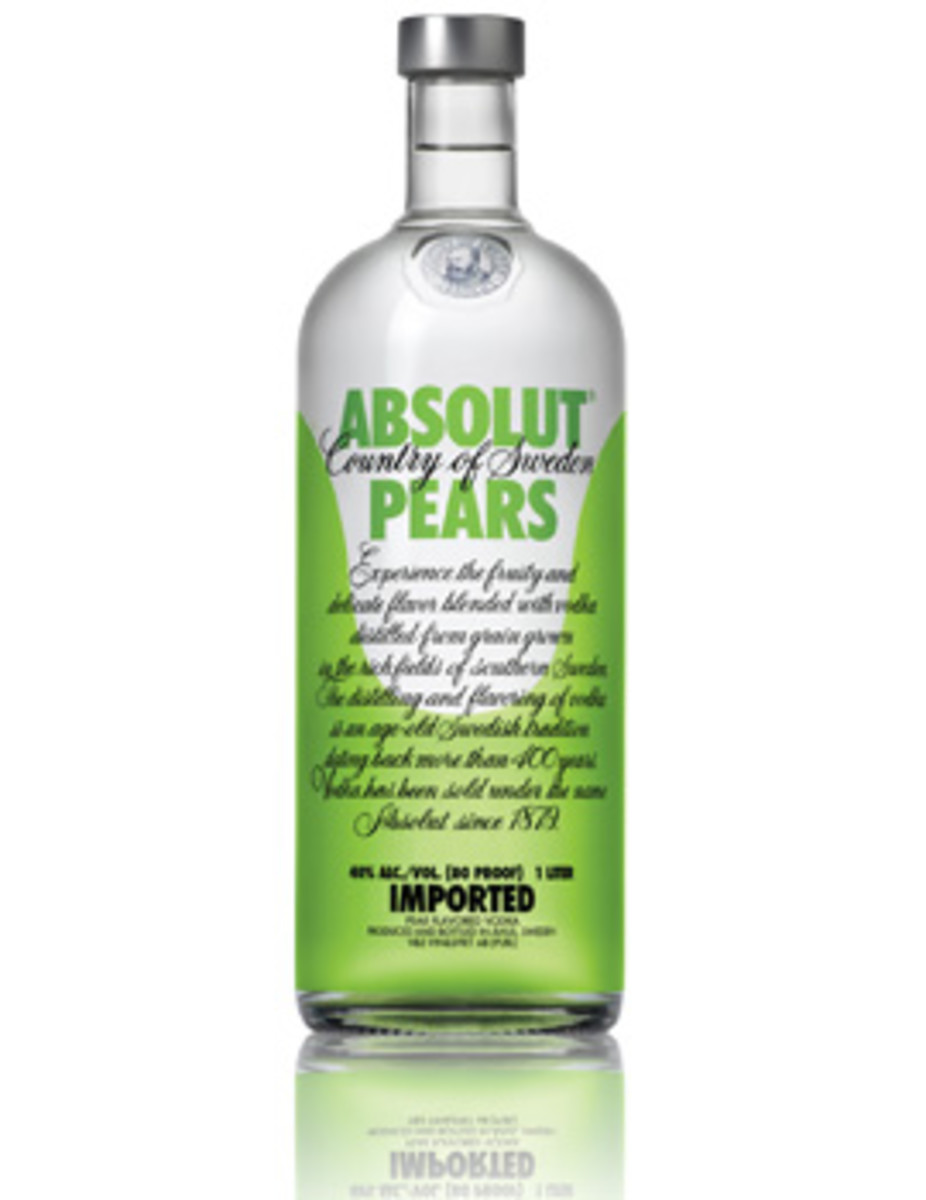What is Mead
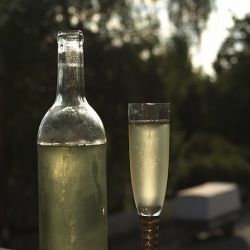
Mead Drinkers Poll
Have you tried mead before?
MEAD: The Drink of The Gods
What is Mead? Very few alcoholic beverages have captured imaginations quite like mead has. If you've ever read historical fiction or fantasy novels then you've probably heard of mead, but what is mead exactly? The Vikings called mead the drink of the gods, for centuries man thought mead had magical properties. This drink is amongst the oldest of alcoholic beverages known to man. In this Lens you will hear all about mead and its wonderful properties.
I could answer the question of what is mead with a simple answer of mead is a honey based wine and leave it at that, but that answer is woefully lacking. Mead is not wine, not exactly, it is produced in much the same manner, but it is subtler in many ways, its flavour can vary from a nice fruity Melomel to a bold strong Capsicumel, never heard these words before, don't fret, I'll explain it all.
In this lens you will learn the wonder of mead, how to make it, what the varieties are, where to buy commercial varieties and how to pick out a mead perfectly suited to your tastes. Mead has a long history, fading in and out of favour, it is now growing on the horizon as more and more people discover the joy of mead, let me then be your guide to introduce you to mead, the drink of the gods.

Suggested Reading

Mead Through The Ages
The History of Mead
Some, like me, consider mead to be the drink most likely to have been the first alcoholic beverage drunk by mankind. There is no real way to determine if this is the case, but we do know its extremely old. We also know that a variety of cultures have independently discovered the secrets of mead making over time, there is even naturally occurring mead in Africa in hollowed out trees that bees use as hives in the dry season and abandon in the rainy season.
Many cultures, including the Greek, Roman, Indian, and Viking considered mead to be a gift directly from the gods to man. The Greeks called it ambrosia and it was said that the recipe was handed to man directly from Olympus. The Vikings believed the first batch of mead was made from the blood of a god and honey and anyone who drank mead was gifted with wisdom and poetic ability.
For some reason the popularity of mead tends to fade in and out, at times surpassing even wine. At one point royal courts wouldn't have even considered having wine on the table as it was thought to be too base, a fine glass of mead was much preferred. In the past ten years or so mead has been growing in popularity, currently in a massive upswing as new fans discover the drink of the gods.
May Maelgwn of Mona be affected with mead, and affect us,
From the foaming mead-horns, with the choicest pure liquor,
Which the bees collect, and do not enjoy.
Mead distilled sparkling, its praise is everywhere.
The multitude of creatures which the earth nourishes,
-excerpt from Book of Taliesin XIX
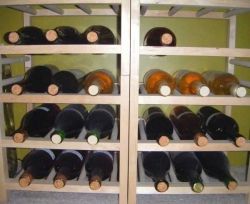
Suggested Reading

Mead Varieties
Mead comes in a variety of types. The simplest form only has honey water and yeast, but there is more to mead then just your alcoholic honey water:
- Traditional mead - Honey Water and Yeast
- Sack Mead - A mead that started out with a higher concentration of honey and usually ends up higher concentration of alcohol
- Short/Quick Mead - A mead that is not fermented to dry, or used processes to speed up fermentation and does not require aging Sir Kenelm Digby's Weak Honey Drink is a prime example.
- Great mead - mead that has been aged for several years
- Hydromel - a very light and low alcohol version of mead, often it is standard mead mixed with water
- Braggot - Somewhere between standard mead and beer, it can be mead with some grains added or beer with some honey added, depending on your point of view and the percentages of each ingreedient
- Melomel - Mix of fruits and Honey
- Black Mead - Blackcurrant based melomel
- Cyser - Apple based melomel
- Morat - mead with a mulberry base
- Pyment - a blend of grapes and honey
- Mulsum - not truly a mead at all but rather a wine mixed with honey
- Omphacomel - honey and verjuice (common in period)
- Oxymel - Blending of honey and wine vinegar
- Metheglin - Mix of Spices/Herbs and honey
- Dandaghare - mead from Napal which uses Himalayan herbs and spices
- Capsicumel - a chile pepper based Metheglin
- Acerglyn - Maple Syrup and honey based mead
- Pitarrilla - a Myan mead using honey, blanche tree bark, and water
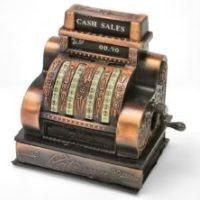
Awesome Recipes

Where to Buy Mead
Finding commercial mead can be somewhat of a challenge. While mead is becoming more and more popular the fact remains that much of the world still has no idea it exists at all. One of the biggest secrets to finding mead is don't bother asking a liquor store clerk if they carry mead, they probably don't know what you are talking about, ask them for Honey Wine. Most US states require that mead be labeled Honey Wine, and while I don't believe its an actual requirement in Canada at all, or elsewhere, it is still quite often referred to as Honey Wine, the only exception to this is Scotland and Britain for sure, and one or two other European countries who still use the traditional name of mead, or the equivalent of it in whatever the local language is.
If you live in Ontario like I do you can check out your local LCBO (Liquor store), but I wouldn't bother unless they have a VIntages section, its the only place I have ever seen mead for sale at the LCBO. Once again, make sure you ask for Honey Wine and not Mead, you'll have much better luck.
In the US it will depend on your States regulation and local stores which carry alcohol.
Most of the time it is best to find a local meadery and buy it straight from them. I find the smaller craft meaderies produce much better quality mead then the few larger meaderies that generally get carried in liquor stores.
Meaderies Online
- Monro Honey and Meadery
Some of the best mead available in South Western Ontario - Rosewood Estates Winery and Meadery
Another Southern Ontario Meadery, fairly good mead but I find them a little heavy on the sulphites. - Rabbit's Foot Meadery
Specializing in traditional meads, cysers and braggots Rabbit's Foot is an excellent Californian meadery. - Moonlight Meadery
This New Hampshire meadery has a growing list of fans. - Blue Dog Mead
Eugene Origon's first meadery - Brothers Drake
Based in Columbus Ohio this meadery is a growing force in the mead world.
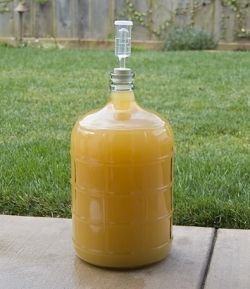
How To Make Mead
Ok, so by now you should know what mead is, and I recommend going out and trying it if possible before embarking on the journey to become a mazer (maker of mead), but if this is not possible then the best way to taste mead is to make some yourself. Making mead is in theory really simple, but in practice discipline and patience are required in large quantities in order to get a proper batch of mead made. As I have stated before in its simplest form mead is just honey and water that has had yeast added and allowed to ferment.
One of the oldest methods of making mead involved putting honey and water in a stone pot and leaving it sit by the fire for several weeks, and then allowing it to sit in the sun for several more weeks. I don't recommend using this method, wild yeast is EXTREMELY dangerous, it can kill you.
Ultimately if you want to produce mead regularly you will want to get some proper mead making equipment, which I will go into in detail shortly, however you can get by with a airtight sterile bottle, an elastic and a balloon. You simply fill the bottle no more than one thirds full of honey, then top it up with water leaving at least a one inch gap of air at the top. Pitch yeast into the bottle seal it and shake it to mix it well. Remove the lid of the bottle and put a ballon over the mouth of the bottle and wrap the elastic around the balloon and bottle to form an air tight seal. Put the bottle somewhere safe and check on it every few days. The balloon should inflate, when it fills up quite a bit but not anywhere near bursting let some of the air out without allowing air in (pull the balloon slightly from the mouth and air should hiss out slowly). Once the balloon no longer fills up anymore and there appears to be no bubbles in the bottle then your mead is done. You can bottle it into another bottle or drink it straight as is.
This method will make a perfectly serviceable mead to give you an idea of the flavour. But since you aren't filtering it or syphoning off the good from the bad you'll end up with a pretty yeasty tasting stuff, you'll want to try to syphon off the liquid that sits above the sediment that will settle at the bottom of the jug after a few weeks after fermentation is done, this should give you a nice clear mead.
As I said this method gives you a quick easy and ultra cheap mead, but its not going to be great, if you want to buy more mead, follow a recipe that balances the flavour, and buy yourself proper mead making equipment.
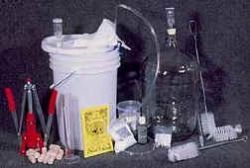
Recommended Equipment
There are a number of things you should buy if you are planning on making mead with any sort of regularity:
- 5 gallon glass carboy (you will probably eventually want two or three of these)
- 5 gallon food safe plastic pale (optional if you have more than one glass carboy)
- food safe syphon hose
- auto syphon
- hydrometer
- drilled out rubber bung(s) (at least one per glass carboy, and be prepared to replace these often, they are cheap and if they start to crack you want to get rid of them so you don't end up throwing out a batch because air got in)
- airlock
- bottle corker
- bottle washing brushes
- wine bottles
Sample Recipe
This mead won me the gold medal at the tenth annual Urich Von Den See Mead Tasting Competition held at the Trillium War an SCA event. The award came as a surprise, when I first tasted this batch (before aging) I was not overly impressed. But the aging with Oak enhanced the flavour considerably more than I expected.
The main issue I had with this mead is that I used Potassium Metabisulphate to stop the fermentation, this left a distinctly chemical flavour to the mead. The metabisulphate does age out, but it is not something I will be doing from now on. After this batch I vowed to allow my meads to ferment dry rather than add the off flavour of metabisulphate.
Ingredients:
- 10 Chai tea bags
- water
- 22lbs of honey
- cubibs
- star anise
- cloves
- half a stick of cinnamon
- casia buds
- 1 pkg of Lavin EC-1118 champaign yeast
- a tsp of lemon juice for acid
Brew the 10 chai tea bags in a large pot with a couple gallons of water. Make the tea quite strong as you want the tanins to come out. Allow the tea to cool to room temperature and put it into your primary fermenter, mix all the other ingredients, I know the spice ingredients are not exact measurements, do this to taste, be careful of the cloves, only add a couple as they are a very strong flavour.
Allow it to ferment to a Specific Gravity of 1.07 which should give you an alcoholic content of about 10% and leave it still quite sweet. Add a small amount of potassium metabisulphate to the must and wait 20 minutes, if it is still crackling from fermentation add some more metabisulphate and repeat until it is completely stopped.
Alternately allow it to ferment dry, allow it to settle, rack then back sweeten to 1.07. This will give a stronger mead, but will allow you to avoid the use of sulphates to stabilize.
Rack it to a new carboy carefully to ensure the sediment remains behind, add oak chips to the carboy and set aside for at least six months, no longer than a year. Within six months the metabisulphate flavour will have vanished and a slight vanilla flavour would have been extracted from the oak. Bottle and enjoy at your leasure.
© 2012 Jeff Johnston








